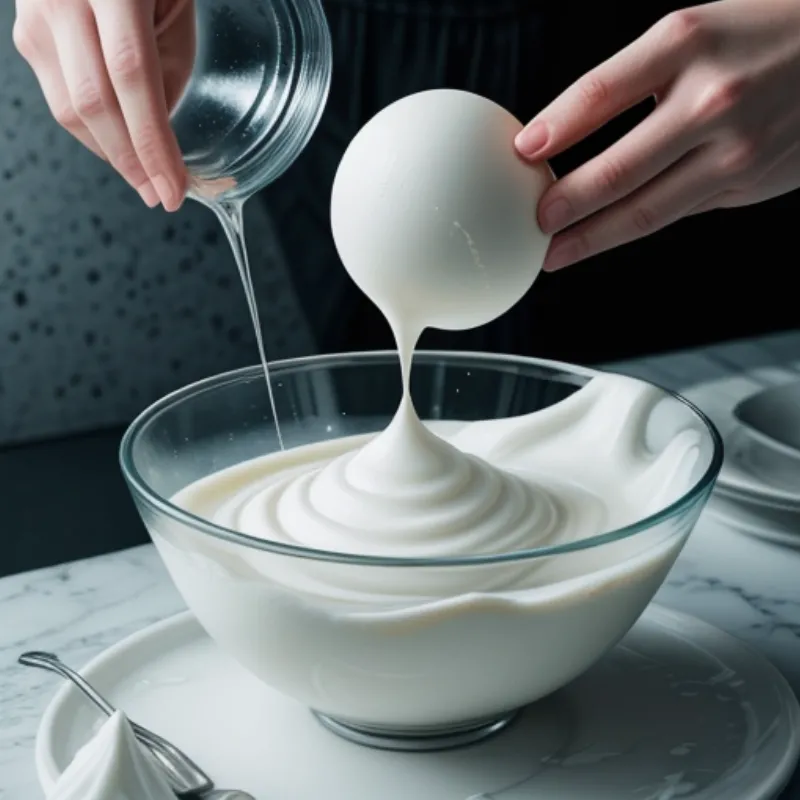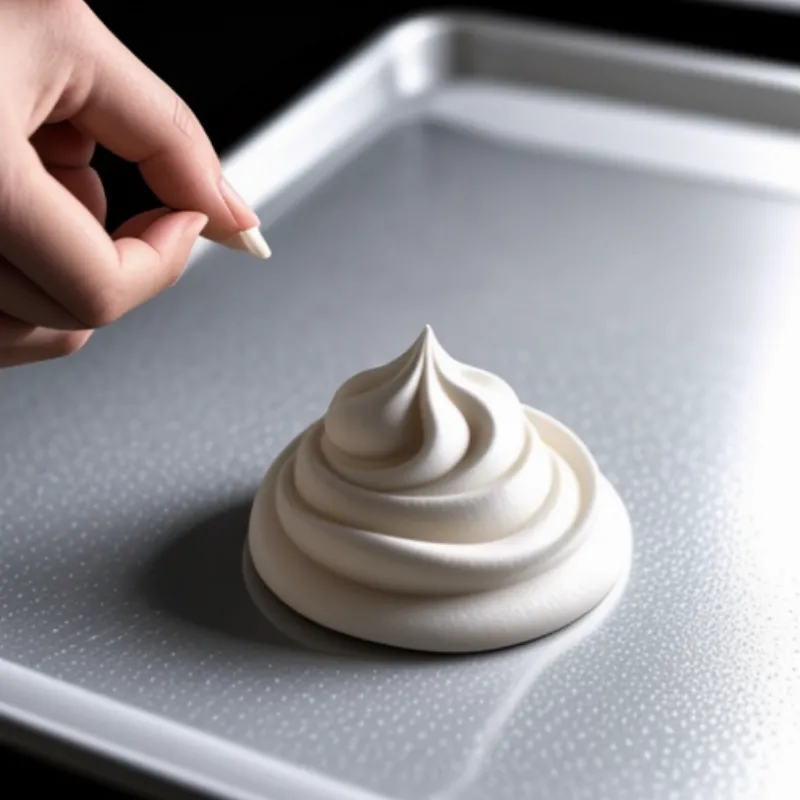Meringue. The word itself sounds light and airy, doesn’t it? And when made right, it truly is a delicate, melt-in-your-mouth dream. This versatile confection, made from just egg whites and sugar, can be enjoyed in countless ways: as a topping for pies and tarts, as the base for delectable macarons, or even enjoyed on its own as a sweet, crisp treat.
While meringue might seem intimidating at first glance, I assure you, it’s entirely achievable, even for beginner bakers! With my easy-to-follow guide, you’ll learn all the tips and tricks to create perfectly whipped meringue that’s sure to impress.
Gathering Your Meringue Ingredients and Tools
Before we embark on our meringue-making adventure, let’s gather everything we need. The beauty of meringue lies in its simplicity, requiring just a handful of ingredients:
Ingredients:
- 2 large egg whites (room temperature)
- 1/2 cup granulated sugar
- 1/4 teaspoon cream of tartar (optional, but recommended for stability)
- 1/4 teaspoon vanilla extract (optional, for flavor)
Tools:
- Electric mixer (stand mixer or hand mixer)
- Clean, dry mixing bowl (glass or metal works best)
- Rubber spatula
- Baking sheet
- Parchment paper or silicone baking mat
- Piping bag and tip (optional, for shaping meringue)
Crafting Your Meringue Masterpiece: A Step-by-Step Guide
Now that we have our ingredients and tools at the ready, let’s dive into the heart of the matter: How To Make Meringue.
Step 1: Preparing Your Workspace and Ingredients
Before you begin, ensure your mixing bowl and whisk attachment are spotlessly clean and completely dry. Any trace of grease or water can prevent your egg whites from whipping properly.
Next, separate your egg whites from the yolks while the eggs are still cold. Cold eggs are less likely to break during separation. Once separated, allow the egg whites to sit at room temperature for about 30 minutes. This will help them whip up to a larger volume.
Step 2: Whipping the Egg Whites
Fit your mixer with the whisk attachment and begin beating the egg whites on medium-low speed until they become foamy. This will take a minute or two.
Add the cream of tartar (if using) and continue beating on medium speed until soft peaks form. You’ll know you’ve reached soft peak stage when you lift the whisk and the peaks gently droop over.
Step 3: Gradually Adding the Sugar
With the mixer still running on medium speed, gradually add the granulated sugar, one tablespoon at a time, allowing each addition to incorporate before adding more. This slow and steady approach ensures the sugar dissolves completely and prevents the meringue from becoming grainy.
Step 4: Achieving Stiff, Glossy Peaks
Once all the sugar has been added, increase the mixer speed to medium-high and continue beating until the meringue forms stiff, glossy peaks. The mixture should be thick, white, and when you lift the whisk, the peaks should stand straight up without collapsing.
Step 5: Flavoring and Shaping Your Meringue
At this point, you can add your vanilla extract (or any other flavorings you desire) and beat for another 30 seconds to incorporate.
If you’re piping your meringue, transfer it to a piping bag fitted with your desired tip. If not, you can simply spoon it onto your baking sheet.
Step 6: Baking the Meringue
Preheat your oven to 200°F (93°C). Line a baking sheet with parchment paper or a silicone baking mat.
Pipe or spoon your meringue onto the prepared baking sheet, leaving some space between each meringue.
Bake for 1-2 hours, depending on the size and thickness of your meringues. They’re done when they’re dry to the touch and easily peel away from the parchment paper.
Step 7: Cooling and Storing Your Meringue
Once baked, turn off the oven and let the meringues cool completely inside the oven with the door slightly ajar. This slow cooling process helps prevent cracking.
Store any leftover meringue in an airtight container at room temperature for up to 3 days.
Tips and Tricks for Meringue Mastery
- Room Temperature Egg Whites: Using room temperature egg whites helps them whip up into a larger volume, resulting in lighter, airier meringue.
- Cleanliness is Key: Ensure your bowl and whisk are completely free of any grease or water, as these can prevent your egg whites from whipping properly.
- Cream of Tartar: A Little Goes a Long Way: While optional, cream of tartar helps stabilize the egg whites, making for a more stable and less likely to weep.
- Gradual Sugar Addition: Adding the sugar gradually allows it to dissolve completely, resulting in a smooth, glossy meringue.
- Don’t Overbeat: Overbeating the meringue can cause it to become dry and grainy.
- Low and Slow Baking: Baking at a low temperature for a longer period ensures the meringues dry out completely without browning too much.
FAQs About Making Meringue
Q: Can I make meringue without cream of tartar?
A: Yes, you can! While cream of tartar helps stabilize the egg whites, you can omit it if you don’t have any on hand. Just be sure to whip your egg whites to stiff, glossy peaks.
Q: My meringue is weeping. What went wrong?
A: Weeping meringue is often a sign of undissolved sugar. Make sure to add the sugar gradually and beat until it’s completely dissolved.
Q: Can I add different flavors to my meringue?
A: Absolutely! Feel free to experiment with different extracts, spices, or even citrus zest to create unique flavor combinations.
Conclusion
There you have it! Making meringue might seem like a feat of culinary prowess, but with this comprehensive guide, you’re well on your way to creating your own batches of cloud-like perfection. So go forth, embrace the magic of meringue, and let your inner baker shine!
 Making Meringue
Making Meringue
 Piping Meringue
Piping Meringue
And if you’re looking for more ways to satisfy your sweet tooth, be sure to check out our other delectable dessert recipes, like our guide on how to make flavored meringue for even more meringue variations or explore the delightful world of macarons with our recipe for how to make almond macaroon cake. Happy baking!
